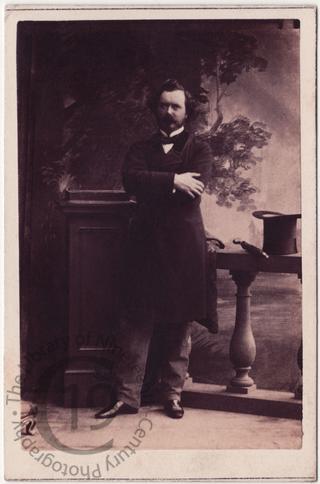
Sir Robert Peel
A carte-de-visite portrait of Sir Robert Peel (1822-1895).
The eldest son of the prime minister Sir Robert Peel, 2nd Baronet, he was educated at Harrow and Christ Church, Oxford. He entered the Diplomatic Service in I844 and succeeded his father as 3rd Baronet in 1850. He served as Member of Parliament for Tamworth, his father’s old constituency, from 1850 to 1880, for Huntingdon from 1884 and for Blackburn from 1885 to 1886. According to Bateman’s The Great Landowners of Great Britain and Ireland (1883), he owned 9923 acres in Staffordshire, Warwickshire and Lancashire, yielding an annual rent of £24,532.
Sir Robert Peel was appointed Irish secretary in 1861 in Palmerston’s ministry, but in 1865, he was succeeded by Chichester Fortescue. It was said that his political career was marred by his lack of dignity and his inability to accept a fixed political creed. He as appointed a GCB [Knight Grand Cross of the Order of the Bath] in 1866.
He was married on 17 June1856 to Lady Emily Hay, daughter of the eighth Marquess of Tweeddale. They had one son, Robert, born in 1867, who succeeded as 4th Baronet, and three daughters.
The Rt. Hon. Sir Robert Peel died on 9 May 1895. According to his obituary in the Times (10 May 1895), ‘[h]e retired to rest at his residence in Stratton-street early on Wednesday night, after giving instructions to his valet to call him at half-past 7 yesterday morning. The valet accordingly at that hour knocked at the bedroom door, but received no answer. Eventually, becoming alarmed, he gained admittance to the room by a window, and found his master lying on the floor close to the bed, apparently dead. Dr. William Hickman, of Harley-street, Sir Robert Peel’s regular medical attendant, was hastily summoned, and pronounced life to be extinct. Sir Robert Peel had been remarkably well during the last few weeks, and only last Tuesday he attended the meeting in St. James’s-hall convened to protest against the Armenian atrocities.’
Photographed by Camille Silvy of London in 1860.
Code: 124636




